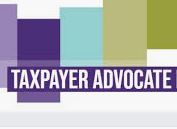
In our previous blog, we highlighted the IRS’s procedures to correct missing Economic Impact Payments (EIPs) and how TAS can assist some taxpayers. The table below sets forth the scenarios the IRS will currently resolve, what some individuals need to do before an EIP is issued, the scenarios where individuals will need to claim the correct payment on their 2020 tax return, the types of cases with which TAS can assist, and how taxpayers can get help.
The table identifies ten EIP scenarios. The IRS has corrected or will soon correct the EIP underpayments for the first three of these scenarios. For example, in the first scenario, an individual who used the Non-Filer Tool prior to May 17 and claimed at least one qualifying child may not have received the qualifying child portion of the EIP because of a programming error. The IRS has started issuing additional payments to these individuals, and we anticipate all additional payments will be received by the end of August. If for some reason the IRS’s current programing correction does not fix a specific individual’s situation in this scenario, TAS will be able to assist the affected individual.
For the last four scenarios, the IRS currently does not have a process in place to adjust these EIP distributions. These individuals will have to claim any additional amounts for which they’re eligible on their 2020 tax returns in 2021. For example, if the IRS calculated the EIP based on a 2018 tax return and the taxpayer’s situation changed in 2019, the IRS is requiring the individual to wait until next year to receive any additional payments. One fact pattern involves the birth of a child in 2019. After receiving the EIP, the individual filed the 2019 return, which would have qualified for the $500 dependent benefit. The IRS has instructed these individuals to adjust the difference with the filing of their 2020 tax return. Unfortunately, for the last four scenarios, TAS cannot assist taxpayers because the IRS is unwilling to create procedures to make the additional payments this year.
This is not a good answer for taxpayers. Congress authorized EIPs to assist the tens of millions of Americans who are suffering financial hardships as a result of COVID-19 closures, and many of these individuals need their stimulus payments now. The CARES Act, in fact, directed the IRS to make payments “as rapidly as possible.” On June 16, I issued a proposed Taxpayer Advocate Directive that directed the IRS to “immediately develop a process to correct EIP errors in instances where an eligible individual has not received his or her EIP or has not received the correct amount.” Since that time, we have held continuing discussions with the IRS about these issues, and I am pleased that the IRS has agreed to correct EIP errors in certain categories of cases. However, many eligible individuals have not received all or part of their EIPs due to circumstances the IRS has not agreed to resolve. We continue to urge the IRS to resolve all EIP cases this year for those taxpayers still waiting.
Taxpayers can call the EIP toll-free line at 1-800-919-9835 for general EIP questions or assistance with a specific issue. For taxpayers unable to resolve their issues with the IRS, who meet TAS criteria, and whose issues fall into the one of the first five categories below, TAS can help. Affected individuals may reach TAS toll-free at 1-877-777-4778.
The ten scenarios described in the table below encompass sources of EIP non-payments or underpayments experienced by many eligible individuals, but this is not an exhaustive list. Given the large number of intended EIP recipients and the wide range of individual and family circumstances, there undoubtedly will be many other fact patterns that occur in smaller numbers.
This chart was prepared by TAS based on discussions with the IRS and is not an official statement of IRS position. The information below reflects TAS’s understanding of the processes as of August 10, 2020. We will continue to provide updates as information changes or new information becomes available.
APPENDIX A: THE IRS’S CURRENT PLANS TO ADDRESS 10 SCENARIOS INVOLVING MISSING ECONOMIC IMPACT PAYMENTS (EIPS) AND WHETHER TAS CAN ASSIST¹


















Recent Comments